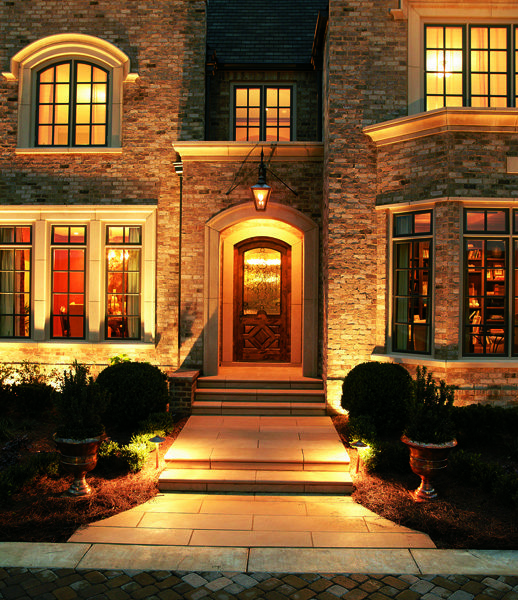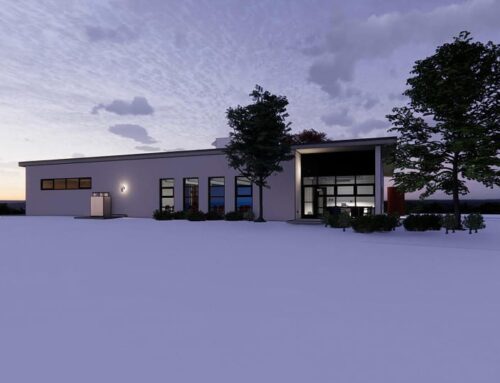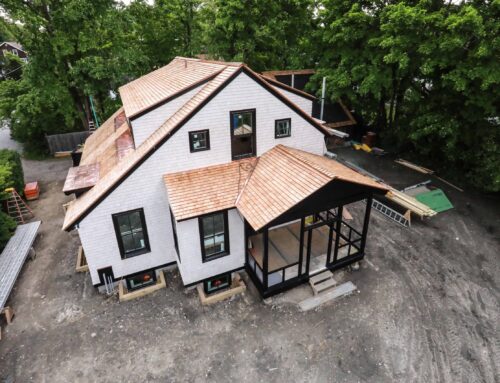 R-Value and Low-E are two terms that you will hear constantly when discussing many materials used in constructing your home. We’ll take a look first at why these values are important and how they affect your material selections.
R-Value and Low-E are two terms that you will hear constantly when discussing many materials used in constructing your home. We’ll take a look first at why these values are important and how they affect your material selections.
Poorly insulated homes are more expensive to heat because the heat that you’re producing doesn’t stay in your home for very long. The 2nd Law of Thermodynamics is what we struggle against to be able to achieve a uniform temperature indoors. It states, simply, that heat will always flow from a hotter to a cooler object. Therefore in summer, the warmer outdoor temperature tries to move into your cooler interior space and in the winter, the warmer indoor temperature tries to move outside. Heat travels right through the walls, floors and roof of your home.
The materials that make up your home interrupt this flow of heat creating the barrier between you and the outside temperature. Some materials are better channels for heat than others. For example, copper is a great conductor of heat – this is why we use it on the bottom of pots and pans. Wood painted white is a significantly worse conductor of heat. You want to use materials that are the worst possible conductors of heat in order to make your home’s indoor temperature as stable as possible with the least amount of heating and cooling.
If a material is a good absorber of heat, it is also a good emitter of heat – remember our copper pots and pans. When a material is a good absorber / emitter, it is called “emissive”. Since we’re trying to use materials that are NOT good absorbers / emitters, anything that is certified as Low-E (Low-Emissivity) will help your home’s insulating properties. And this keeps your heating and cooling bills as low as possible.
 Emissivity is usually used to describe the coatings on window glass. Low-E glass, in combination with other insulating technologies determine the U-Factor rating for the whole window. When a company describes its products as “Low-E” they’re saying that they are good insulators.
Emissivity is usually used to describe the coatings on window glass. Low-E glass, in combination with other insulating technologies determine the U-Factor rating for the whole window. When a company describes its products as “Low-E” they’re saying that they are good insulators.
R-Values are a measure of a material’s ability to RESIST heat transfer. Materials with higher R-Values are better insulators than materials with low R-Values. R-Values are usually discussed in reference to the various forms of insulation, but your flooring, exterior materials and roofing materials all have varying R-Values.
Because the exterior of your home isn’t just made of insulation, the R-Values of all the materials have to be considered when calculating a “whole wall R-Value”. These include siding material, sheathing, house wrap, insulation, and framing.
So if you’re thinking, “Great! My insulation has the best R-Value available. I’m set.” Think again. If any of the elements in your exterior wall is poorly installed, meaning there are spaces and gaps where air can get through, you’ve reduced the insulating ability of your home and the best insulation in the world can only do so much to make up for this.
If you want a home with a great R-Value, do these things:
1. First, try to position your home so that the longer sides aren’t facing towards the south and west where the sun can assault you all summer, driving your cooling bills through the roof. If you can’t change the positioning of your home, plant trees for shade in the future.
2. Make sure that the exterior siding, sheathing, and house wrap are the best quality possible, with the highest R-Values possible, and check the installation of all of these components with your builder. Look for air pockets and places where joints don’t meet properly as well as checking that the seams of all materials fit neatly and are sealed properly.
3. Spend some more money on better insulation. You want something that has a high R-Value and covers completely (look at spray cellulose). Check on your home when they’re installing the insulation. If you see places that are missed., point them out. Insulate your roof with a more expensive insulation – gains here pay off during sweltering summer months. If your budget is tight, at least look at installing radiant barrier sheathing on the roof. This is OSB sheathing with a reflective aluminum facing that is installed shiny side down. It basically creates a low-e barrier between your roof surface and your attic space. It’s not as good as serious insulation, but certainly better than nothing.
4. You can also make gains in the roofing material you choose. Asphalt shingles, though the most affordable, are going to cost you over time because they have extremely low R-Value AND they aren’t low-e.
5. Talk to your builder about alternative framing techniques that help decrease thermal bridge.






Leave A Comment
You must be logged in to post a comment.